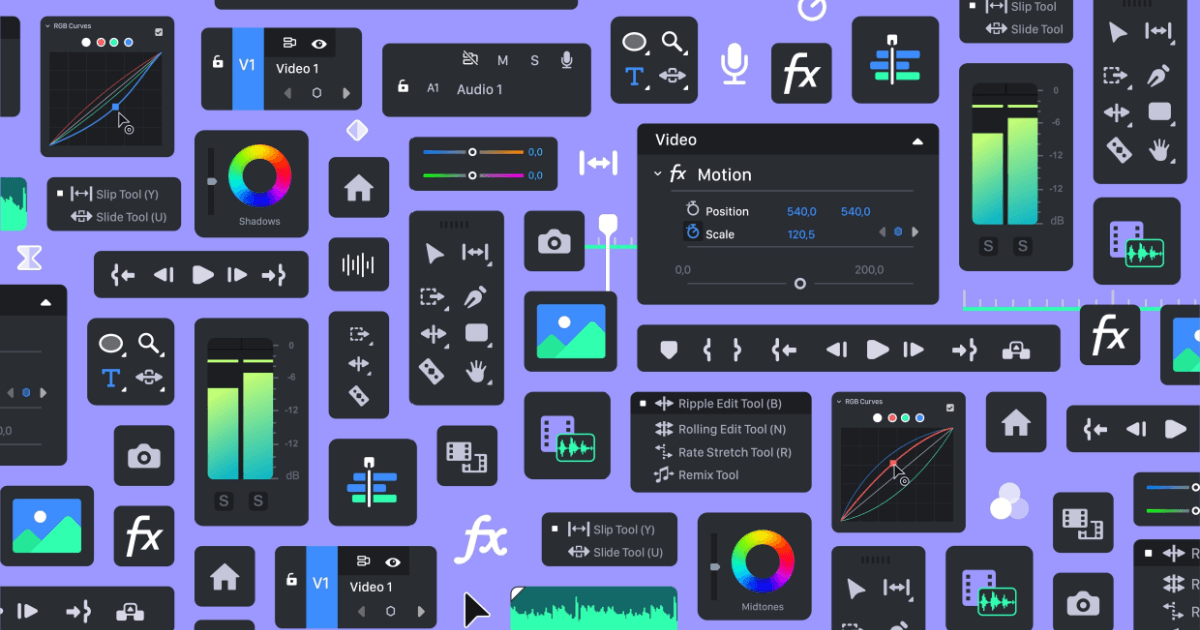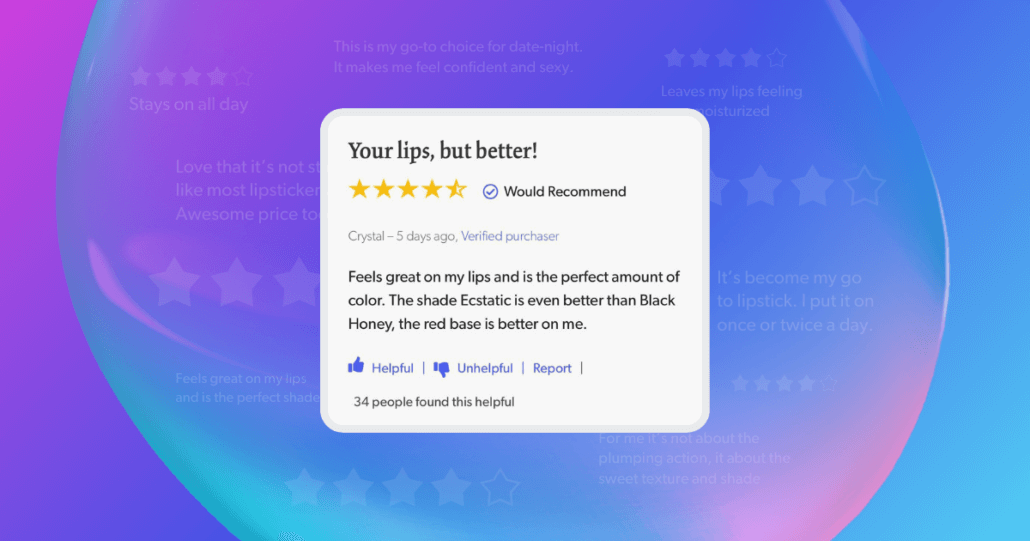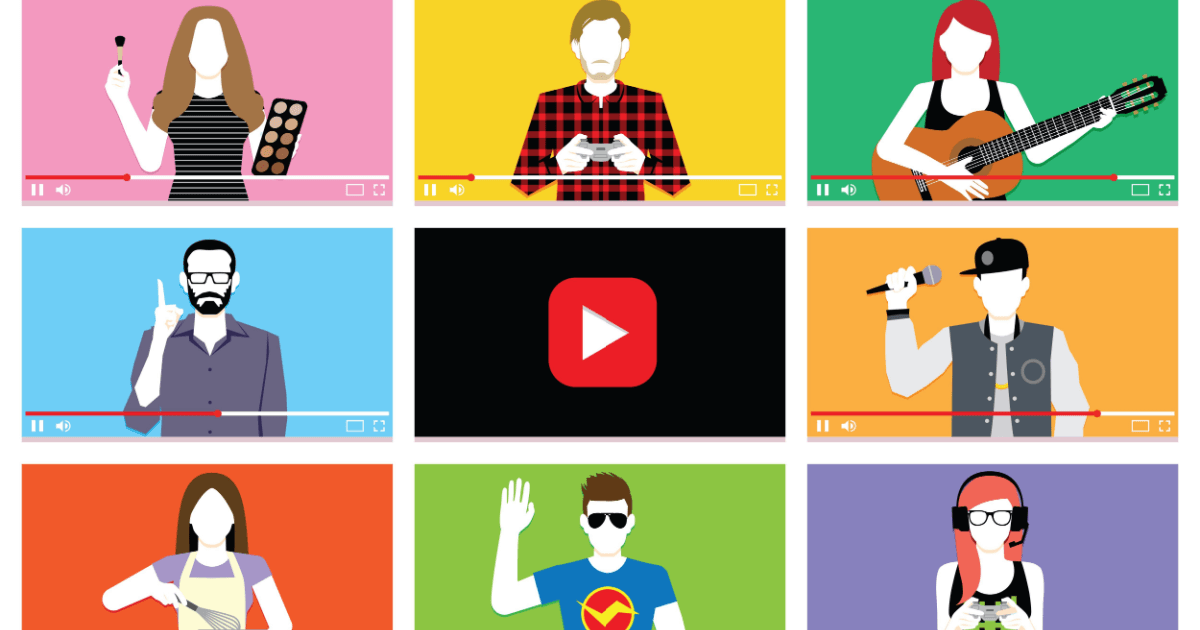February 2, 2024
First, video killed the radio star, now video is coming for the… photo star? In the current e-commerce world, it’s more important than ever for brands and retailers’ marketing strategies to include video e-commerce. Think shoppable videos on Instagram, videos on product pages, and a presence on viral video apps like TikTok.
Since first taking off a few years ago, the use of video in e-commerce is no longer just an option — it’s a necessity. 89% of consumers want to see more videos from brands in 2024, and over 60% of shoppers are more likely to buy a product if its product page has customer videos, according to research by Bazaarvoice.
Chapters:
- What is video commerce?
- The value of video commerce for brands and retailers
- How to use video in e-commerce
- Video commerce: Best practices for brands
- Drive more sales with video commerce
What is video commerce?
Video commerce is the use of video content to promote your product and services to create better shopping experiences for consumers that drives purchases.
If you’re scrolling through, say, your favorite e-commerce store, which type of content is more likely to snag your attention? Walls of text, static images, or engaging videos that show the products in action? Likely the latter. That’s the power of video commerce. It’s a dynamic way of advertising and selling products that’s transforming the e-commerce landscape by helping consumers feel more confident in their purchases.
Video commerce might’ve started as just a trend (you can blame TikTok for that), but it quickly evolved into much more than that. It’s a strategy that blends entertainment with instant purchasing options and makes the shopping experience more engaging, informative, and fun.
The value of video commerce for brands and retailers
E-commerce brands are in a constant battle to find the next shiny strategy that will capture consumer attention and, ultimately, increase profits. Video commerce is precisely that, as it provides a creative outlet for brands to not only showcase their products but also weave compelling narratives that resonate with consumers.
Enhanced customer engagement
You can’t just put your products in front of an audience and hope for the best. Marketing is everywhere. If standing out and getting audiences to engage with your brand is the goal, you need to invest in immersive and interactive experiences that captivate and retain their attention.
This is where videos shine. They have the unique ability to tell stories, evoke emotions, and create a sense of closeness with a brand. And stories are what connects us. They’re the difference between someone buying a product versus an experience, something purely material versus a narrative they can relate to on a personal level.
Thanks to YouTube, TikTok, and Instagram Reels, the shareability of videos has gone through the roof, which can mean very good things for your brand reach. When users share video content on social media platforms, it not only extends a brand’s visibility but also adds a layer of credibility through peer recommendations. Overall, this organic spread of content contributes to a broader and more engaged audience.
Building trust with audiences
Trust is at the heart of any successful brand-customer relationship, and video commerce offers an authentic means to help you build it. Through videos, you can present your products in a transparent and genuine way, allowing customers to see the real value and application of what they’re buying.
This authenticity is amplified tenfold when brands incorporate user-generated content (UGC), such as customer testimonials or product reviews, into their video content strategy. Getting Beyoncé to promote your brand is great, but it’s seeing real people use and endorse your products that promotes trust and credibility (and it’s also a lot cheaper.)
Featuring employees or behind-the-scenes footage in videos also helps humanize your brand, making it more relatable and trustworthy to the audience. Beyond building confidence in the product, this approach also creates a sense of loyalty and connection between your brand and your customer base. Faceless corporations are out, the human element is very much in.
Improved product understanding and visualization
It doesn’t matter how glossy your products look. If a consumer can’t glean their value in a real-life setting, they’ll likely give up on the purchase. Video content addresses this issue by providing detailed demonstrations and showcasing products in action. Marketers have caught on to the value of video in this scenario, with 96% agreeing that videos have helped increase user understanding of their products or services.
Images are still important, but videos can effectively highlight the features, functionalities, and real-life applications of a product, giving your customers a comprehensive understanding of what they’re buying. This type of dynamic visual content can truly bring products to life, offering a virtual “try-before-you-buy” experience that is particularly valuable in an online shopping environment.
How to use video in e-commerce
Video helps you better promote products, build brand trust, and reach new customers through relatable, viral posts on social media. And there’s no shortage of options — from snappy short clips to impactful and lengthier ads, as well as GIFs and livestreams. Customers also crave unboxing videos, tutorials, testimonials, interviews, and more.
Here are the most effective ways to use video in your e-commerce strategy.
Optimize your product pages with video content
Because more and more shoppers are making purchasing decisions online instead of in-store, brands need to help consumers feel confident before they buy. Video does just that, because it shows:
One way you can instill confidence is by enhancing your product pages with videos. You can produce unboxing videos that allow your customers to experience your product before they buy it, or you can go down the ‘how-to’ route with videos that help customers understand how to use your products.
Customers also love user-generated videos, like testimonials or previous shoppers showcasing how they use a product. In fact, Bazaarvoice research shows that both men and women look at user-generated videos to see the product in action.
Address frequently asked questions with video responses
Give your brand a voice and show off your authenticity by answering frequently asked questions (FAQs) in a video format. Video gives you the chance to really bring questions to life and provides nuanced and contextual answers that don’t translate as effectively into text. You can also create accompanying graphics and visuals to better explain more technical answers, because who doesn’t love a nice pie chart?
If you’re looking for a prime example of this, check out eyeglass company Warby Parker’s YouTube channel. They have an entire playlist dedicated to FAQs that answer commonly asked questions.
Some videos are animated, while some feature employees explaining products, but all of them exude Warby Parker’s personality.
Customers can also ask questions in the comments and receive a response.
Share shoppable video content on Instagram
Social media is the pinnacle of video and e-commerce, and Instagram is leading the way. Instagram’s video capabilities have evolved so much since the app first introduced the feature in 2013 that you could argue it’s now a video-sharing app (blame TikTok…again.)
Instagram has made it even easier to shop on their platform, by allowing brands to link to products in videos. All customers have to do is click on the link to the product they want to buy, and they can either save it for later or go to the product page to make a purchase.
Apparel brands like Meshki have used the feature to create video content that shows people wearing their clothes, with links that go directly to the products worn. For example, they produce videos that feature regular people donning their newest or most popular items. Customers can see products in action before deciding whether or not to buy, and if it’s an immediate yes, the link to the product page is right there in the video. It’s social commerce at its finest.
Share engaging short-form clips on TikTok
With over a billion users worldwide, TikTok is the hottest new social media app rife with future customers for your brand to engage with. The app encourages creativity with a wide range of filters, video effects, and the ability to add music to your clips. Easily expand your audience by joining video TikTok trends and challenges, and watch your videos go viral.
In October 2020, TikTok partnered with Shopify to introduce shoppable video ads on the app. Now business accounts can create in-feed ads included within the TikTok algorithm, making it the pinnacle of video in e-commerce.
But shoppable videos aren’t the only way you can engage with your audience on TikTok. From behind-the-scenes videos to product demos and brand collaborations, the app is a powerhouse for all things video content and a top-tier distribution channel for all your rich UGC.
Hop on the livestreaming trend
Originally popularized in China, livestream video in e-commerce began to trend around the world during the pandemic, when consumers craved human connection. And now, livestream shopping is changing the industry.
Walmart created the first ever “shoppable” livestream, called the “Holiday Shop-A-Long Spectacular,” where a live digital audience got to watch ten TikTok creators showcase their favorite Walmart fashion items.
Verishop saw the immense potential of live commerce and launched a new app called Shop Party, to meet this demand. On the app, users can hang out, explore products and shoppable content together, and purchase products. You can get in on the livestream action, too, by hosting a Shop Party for group shopping and educational lessons.
Supercharge your product launches with video
When there’s a new kid on the block, you want it to make a splash. Teasing and announcing new products with video content is like a mini-blockbuster moment for your brand. You likely won’t become the next #Barbenheimer, but you have the chance to highlight the features and benefits of your new product with a flair that grabs attention and holds it.
@prettywell.co New product launch 💖💥
♬ original sound – bestspedup
You can create a range of content, from teasers that pique interest and build anticipation to in-depth demonstrations that dive into the product’s features and benefits. These videos can be shared across different platforms — from your website and social media channels to email newsletters — for maximum visibility and engagement.
Incorporate video in email marketing campaigns
Who doesn’t love a brand email with great big walls of text? Right? Right? Wrong. Inboxes are often flooded with text-heavy emails, so this is yet another area where video can be a much-appreciated breath of fresh air. A well-placed video can summarize your message succinctly, so it’s easier for your audience to understand and engage with your content.
Videos in emails can play a big part in boosting key metrics like click-through rates and engagement. People are naturally drawn to visual content, and a compelling video can encourage them to spend more time with your email and, by extension, with your brand.
Whether it’s a product demonstration, a behind-the-scenes look, or a heartfelt message from your CEO, videos can convey emotion and information in a way that text alone cannot. You can use it to add excitement to new product announcements, offer valuable how-tos, share customer testimonials, or even give a sneak peek into upcoming events. The possibilities are endless, and the result is a more engaged and responsive audience.
Implement video into customer service and support
What’s the difference between reading through a complex troubleshooting guide and watching a simple, step-by-step video that walks you through the process? For starters, you wouldn’t be bored to tears and tempted to give up altogether. But the latter also makes the solution more accessible and adds a personal touch that can be reassuring to customers.
Plus, video support can be incredibly versatile. Live video chats, for example, offer real-time assistance, making customers feel heard and valued. Pre-recorded instructional videos, on the other hand, provide a resource that customers can access at their convenience, reducing the need for repeated support for common issues.
Whatever the format, implementing video in customer service demonstrates your brand’s commitment to innovation and customer satisfaction. It shows that you’re willing to go the extra mile to ensure a positive customer experience.
Video commerce: Best practices for brands
Are you tempted to immediately start recording your surroundings? Understandable, we made a good case. But before you channel your inner auteur, take a minute to consider the following best practices and ensure your video commerce strategy yields the best possible results.
Focus on high-quality video production
It’s the 21st century, and no one wants to put up with grainy videos on their feeds — especially if they’re being sold something. Unless it’s a mermaid or UFO sighting, your video content should always reflect the quality of your brand and match or surpass the standards of your competitors.
The most important elements are clear footage, good lighting, and solid editing. Sound quality also matters — clear audio without background noise is essential, especially in videos that include speaking parts or demonstrations. Investing in good-quality microphones and sound editing can really enhance the overall quality of your video.
You can’t always get top-quality when the videos are coming from outside parties such as influencers and other content creators. But working with a UGC provider like Bazaarvoice goes a long way here. We help you partner with the right creators and ensure that the content meets your brand’s standards before making its way to your marketing channels.
Keep content authentic and relatable with UGC
We already touched on it, but it bears repeating. UGC, which includes videos created by your customers, resonates deeply with audiences because it showcases real-life experiences with your products or services.
UGC acts as social proof. When users see other people enjoying your products, it reinforces the idea that they’re making a good choice. This peer validation is incredibly powerful at a time when consumers are bombarded with marketing messages from all sides. It cuts through the noise and provides a clear, honest perspective — a far cry from a polished, professional advertisement.
Incorporating UGC into your video commerce strategy also fosters a sense of community around your brand. It shows that you value your customers’ voices and experiences, further enhancing the connection between your brand and your audience. This community-building aspect can transform one-time buyers into brand advocates, extending your reach organically (read: free.)
Optimize videos for search engines
If you want your video content to reach the masses, you can’t ignore search engines. Just like with typical search engine optimization (SEO), video SEO involves a set of practices designed to make your content more attractive to Google & co.
The first step is to use relevant and keyword-rich titles and descriptions. This doesn’t mean stuffing keywords in haphazardly, but rather incorporating them in a way that accurately describes the content of your video. The title and description should give potential viewers a clear idea of what to expect, while also aligning with the terms they might use in their searches.
Thumbnails also play an important role here. A compelling thumbnail can dramatically increase the click-through rate of your video. It should be visually appealing and relevant to the content, as it serves as the first impression for potential viewers.
Transcripts and captions are not only beneficial for accessibility but also for SEO. They provide additional text that search engines can crawl, making your video more likely to show up in searches.
Lastly, hosting your video on a platform that is recognized and trusted by search engines can impact its visibility. Platforms like YouTube, which is owned by Google, are often prioritized in search results, making them a good choice for hosting your video content.
Ensure mobile-friendly video formats
We are quickly approaching a time when people might as well have their smartphones glued to their foreheads. While the situation isn’t that dire (yet), audiences do prefer to watch videos on their small devices — according to Statista, 70% of the digital video content audience in the US was reported to watch videos on their smartphones. So if your videos aren’t optimized for mobile, you’re already at a disadvantage.
Optimizing for mobile means considering aspects like video format, size, and loading times. Videos should be in a format that’s widely supported across various mobile devices and operating systems. Formats like MP4 are generally a safe bet, offering good compatibility and quality.
Another key aspect is the size and resolution of the video. While high-definition videos are great for larger screens, they might not be necessary for mobile viewing and can lead to longer loading times. Optimizing video resolution and compression for mobile devices ensures that your content loads quickly and plays smoothly, even on slower data connections.
With the rise of mobile usage, vertical videos have gained popularity, especially on platforms like Instagram and TikTok. Creating content that can be easily viewed without rotating the device can enhance the user experience significantly.
And don’t forget to consider the design and placement of any text or graphics in your videos. On smaller screens, these elements need to be clearly visible and legible. Overcrowding the screen with too much text or too many graphics can make the content hard to follow on a mobile device and give your audience a migraine.
Drive more sales with video commerce
Regardless of what platform your brand is focusing on, using video in e-commerce is simply unavoidable. Lest we forget, it literally killed the radio star. Learn how to make shoppable video work for you and your brand to fit into the modern landscape of e-commerce. Learn more about how to collect and wield this visual content here.









